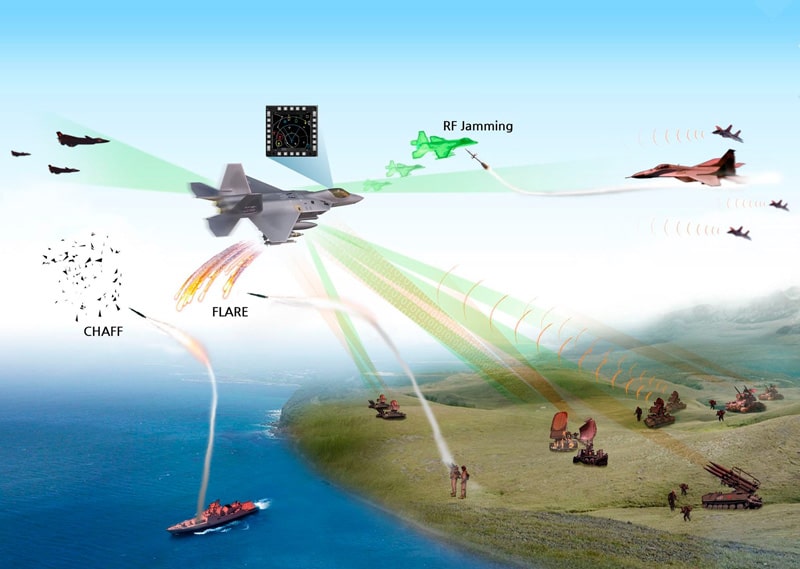South Korean company LIG Nex1 has developed an Electronic Warfare self-protection system for its eXperimental KF-X fighter aircraft.
The prototype of the newly developed system was delivered to the Korean Aerospace Industries (KAI) in late 2020. The company will test the system with its KF-X fighter jet that is still under development at KAI’s headquarters in Sacheon. The first prototype of the advanced fighter jet is expected to take off in April this year. The KAI’s officials told Janes.
According to officials, the EW suite was developed at the cost of about 101 million US dollars or 114.5 billion KRW (Korean Republic Won). The program for the development of advanced EW suits was started back in 2016. After a series of trials and evaluations, the system is expected to enter serial production.
Follow us on Google News to get the latest defense news and analysis
Functionality of EW-suit:
The company developed the new system as an ‘EW self-protection jammer’. It will help the aircraft to detect, analyze, and eventually jam the signals from the enemy radars or incoming missiles. The EW-suit is also integrated with countermeasures against the incoming threats which includes flares and chaffs.
The KF-X EW-self-protection jammer is a complex system. It consists of four components: RWR, EWC, RF jammer, and CMDS.
RWR:
Radar Warning Receiver (RWR) is designed to detect and identify high-frequency signals from enemy early-warning radars. It alerts the pilot in advance about the incoming threat.
EWC:
Electronic Warfare Computer (EWC) is used to integrate threat information provided by RWR against the enemy’s early warning radar signals to the mission computer. The mission computer in return displays the threat information to the pilot and calculates the countermeasures to mitigate that threat by integrating and controlling CMDS and RF jammers.
RF Jammer:
Radio Frequency (RF) Jammer disrupts enemy missiles and radars radio signals. It emits jamming signals and noise in response to the high-frequency signal threats from enemy radars, missiles, and anti-aircraft guns hence improve the aircraft’s survivability ratio in future electronic warfare.
CMDS:
Counter Measure Dispenser System (CMDS) as suggested by its name, it fires flare bombs and chaffs to counter the enemy signal threats coming from adversary’s aircraft or missiles. It also helps to increase the survivability of the pilot and the fighting platform.
Using high levels of integration in the design and manufacturing process, the EW suit’s weight is reduced by applying the latest technologies. The high-power amplifier design technology was successfully integrated with electronic warfare equipment, has been redesigned to fit the band. The Surion company’s EW integration technology helps to develop advanced RF jammers.
The brain of the EW suite, the Flight Operation Program (OFP) is also developed by the LIG NEX1’s indigenous technology.
The goals of miniaturization and weight reduction are achieved by designing core components such as a wideband digital receiver that accurately measures characteristics of the flying platform at high speeds and DRFM that generate and store signals in a wideband are developed in the form of cards by applying the advanced technology.
The first prototype by the KAI company will be rolled out in April, while two more prototypes will be delivered by the company to the South Korean Air Force this year.
Analysis:
The development of the advanced Electronic Warfare self-protection system by the Korean defense company itself is a good step forward to develop homegrown technologies. This will help make them independent for future defense products that they buy from other nations by spending billions of dollars.
The new Electronic warfare system is developed by South Korea for its first home-made KF-X fighter prototype. So it will be mass-produced after extensive testing in real-time scenarios and combat environments and it will take time to mature the technology to be used in future fighter jets.


